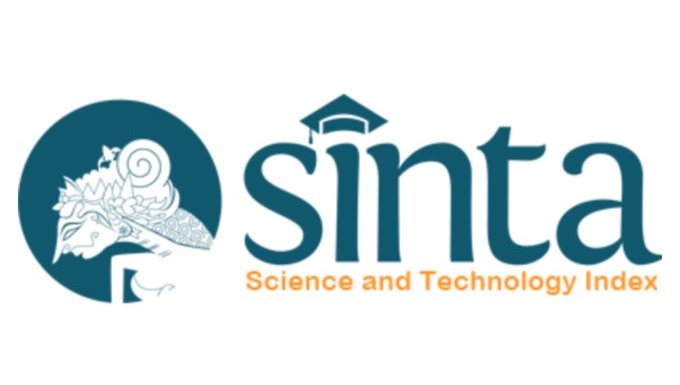Beberapa Faktor yang Terjadi pada Gangguan Gizi pada Anak di Puskesmas Maubesi, Nusa Tenggara Timur: Studi Kohort Retrospektif
Hasil Penelitian
DOI:
https://doi.org/10.55175/cdk.v52i11.1568Kata Kunci:
Anak, gizi kurang, malnutrisiAbstrak
Pendahuluan: Di Indonesia, angka kejadian gangguan gizi (malnutrisi) pada anak usia 0–59 bulan tahun 2023 mencapai 8,5%. Metode: Penelitian kohort retrospektif dilakukan pada 48 anak di wilayah kerja Puskesmas Maubesi, Nusa Tenggara Timur, pada periode Januari–Juni 2024 untuk menilai hubungan jenis kelamin, berat dan panjang badan lahir, jumlah saudara, tempat persalinan,
pemberian ASI eksklusif, status imunisasi, riwayat penyakit, variasi makanan, usia dan pendidikan ibu, pekerjaan ibu, berat badan ibu sebelum hamil, kadar Hb ibu selama kehamilan, riwayat hipertensi dan diabetes ibu, serta kunjungan antenatal care (ANC) dengan angka kejadian gizi kurang dan buruk. Data diperoleh dari aplikasi SIGIZI Terpadu, dan status gizi anak diukur menggunakan grafik
BB/TB WHO (2006). Hasil: Analisis menggunakan uji Fisher’s exact dan uji korelasi rank Spearman. Terdapat asosiasi signifikan antara jumlah kunjungan ANC dengan kejadian gizi kurang dan buruk (p = 0,001) dengan korelasi negatif lemah : r(44) = -0,139, p = 0,357. Simpulan: Pada penelitian ini didapatkan korelasi negatif antara jumlah kunjungan ANC dengan angka kejadian gizi kurang dan buruk.
Unduhan
Referensi
World Health Organization. Malnutrition [Internet]. Geneva: World Health Organization; 2024 Mar 01 [cited 2024 Jul 04]. Available from: https://www.who.int/news-room/fact-sheets/detail/malnutrition#:~:text=Overview,low%20weight%2Dfor%2Dage)%3B.
UNICEF. Global nutrition report 2022 stronger commitments for greater action [Internet]. New York, USA: United Nations Children’s Fund; 2020 [cited 2024 Jul 04]. Available from: https://data.unicef.org/resources/global-nutrition-report-2020/.
UNICEF, World Health Organization, World Bank Group. Joint malnutrition estimates 2023 edition [Internet]. Geneva: World Health Organization; 2023 [cited 2024 Jul 04]. Available from: https://www.who.int/data/gho/data/themes/topics/joint-child-malnutritionestimates-unicef-who-wb#:~:text=In%202022%2C%20148.1%20million%20children,for%20their%20height%20(overweight).
WHO, UNICEF, European Commission. Global nutrition targets tracking tool [Internet]. Geneva: World Health Organization; 2021 [cited 2024 Jul 04]. Available from: https://www.who.int/data/nutrition/tracking-tool/wasting.
Badan Kebijakan Pembangunan Kesehatan Kementerian Kesehatan Republik Indonesia. Survey kesehatan Indonesia (SKI) 2023 dalam angka [Internet]. Jakarta: Kementerian Kesehatan; 2023 [cited 2024 Jul 04]. Available from: https://www.badankebijakan.kemkes.go.id/ski-2023-dalam-angka/.
Soliman A, De Sanctis V, Alaaraj N, Ahmed S, Alyafei F, Hamed N, et al. Early and long-term consequences of nutritional stunting: from childhood to adulthood. Acta Biomedica. 2021;92(1):11346. doi: 10.23750/abm.v92i1.11346.
Galloway R. Global nutrition outcomes at ages 5 to 19. In: Jamison DT, Nugent R, Gelband H, Horton S, Jha P, Laxminarayan R, et al., editors. Child and adolescent health and development [Internet]. 3rd ed. Washington (DC): The International Bank for Reconstruction and Development; 2017 [cited 2024 Jul 04]. Available from: https://www.ncbi.nlm.nih.gov/books/NBK525239/. doi: 10.1596/978-1-4648-0423-6_ch3.
Tette EMA, Sifah EK, Nartey ET. Factors affecting malnutrition in children and the uptake of interventions to prevent the condition.BMC Pediatr. 2015;15(1):189. doi: 10.1186/s12887-015-0496-3.
Shirima GV, Nyongole O, Massawe A, Kilonzo G. Factors associated with cognitive developmental delay among infants attending reproductive and child health clinics in Dar es Salaam, Tanzania. World J Adv Res Rev. 2021;9(2):179–81. doi:10.30574/wjarr.2021.9.2.0060.
Victora CG, Christian P, Vidaletti LP, Gatica-Domínguez G, Menon P, Black RE. Revisiting maternal and child undernutrition in lowincome and middle-income countries: variable progress towards an unfinished agenda. Lancet 2021;397:1388–99. doi: 10.1016/S0140-6736(21)00394-9.
Li Z, Kim R, Vollmer S, Subramanian SV. Factors associated with child stunting, wasting, and underweight in 35 low- and middleincome countries. JAMA Netw Open. 2020 Apr 1;3(4):e203386. doi: 10.1001/jamanetworkopen.2020.3386.
Harding KL, Aguayo VM, Webb P. Factors associated with wasting among children under five years old in South Asia: implications for action. PLoS One. 2018;13(7):e0198749. doi: 10.1371/journal.pone.0198749.
Iftikhar A. Maternal anemia and its impact on nutritional status of children under the age of two years. Biomed J Sci Tech Res.2018;5(3):4519–22. doi: 10.26717/BJSTR.2018.05.001197.
Gebre A, Reddy PS, Mulugeta A, Sedik Y, Kahssay M. Prevalence of malnutrition and associated factors among under-five children in pastoral communities of Afar Regional State, Northeast Ethiopia: a community-based cross-sectional study. J Nutr Metab.2019;2019:1–13. doi: 10.1155/2019/9187609.
Tekile AK, Woya AA, Basha GW. Prevalence of malnutrition and associated factors among under-five children in Ethiopia: evidence from the 2016 Ethiopia demographic and health survey. BMC Res Notes. 2019;12(1):391. doi: 10.1186/s13104-019-4444-4.
Getu BD, Azanaw KA, Zimamu LY, Adal GM, Tibebu NS, Emiru TD, et al. Wasting and its associated factors among children aged from 6 to 59 months in Debre Tabor town, Amhara region of Ethiopia, 2019: a multicentre community-based cross-sectional study. BMJ Open. 2023;13(7):e071679. doi: 10.1136/bmjopen-2023-071679.
Rahayu RM, Pamungkasari EP, Wekadigunawan CSP. The biopsychosocial determinants of stunting and wasting in children aged 12–48 months. J Maternal Child Health. 2018;3(2):105–18. https://doi.org/10.26911/thejmch.2018.03.02.03.
Makoka D. The impact of maternal education on child nutrition: evidence from Malawi, Tanzania, and Zimbabwe [WP84] [Internet]. United States Agency for International Development; 2013. Available from: https://www.dhsprogram.com/pubs/pdf/WP84/WP84.pdf.
Onis M de. Length/height-for-age, weight-for-age, weight-for-length, weight-for-height and body mass index-for-age; methods and development [Internet]. WHO child growth standards. Geneva: WHO Press; 2006 .p. 312. https://www.gbv.de/dms/hbz/toc/ht014766503.pdf.
Yazew T, Daba A. Associated factors of wasting among infants and young children (IYC) in Kuyu District, Northern Oromia, Ethiopia. Biomed Res Int. 2022;2022:1–8. doi: 10.1155/2022/9170322.
Gilano G, Hailegebreal S, Sako S, Haile F, Gilano K, Seboka BT, et al. Understanding child wasting in Ethiopia: cross-sectional analysis of 2019 Ethiopian demographic and health survey data using generalized linear latent and mixed models. JMIR Publ Health Surveill.2023;9:e39744. doi: 10.2196/39744.
Wali N, Agho KE, Renzaho AMN. Wasting and associated factors among children under 5 years in five south asian countries (2014–2018): analysis of demographic health surveys. Int J Environ Res Public Health. 2021;18(9):4578. doi: 10.3390/ijerph18094578.
Kuhnt J, Vollmer S. Antenatal care services and its implications for vital and health outcomes of children: evidence from 193 surveys in 69 low-income and middle-income countries. BMJ Open. 2017;7(11):e017122. doi: 10.1136/bmjopen-2017-017122.
Arjan de W, Eleanor R, Praveen K, Abner D, Harriet T, Saul G. Continuum of care for children with wasting in India: opportunities for an integrated approach. Emergency Nutrition Network [Internet]. 2019 [cited 2024 Jul 05]; 82. Available from: https://www.ennonline.net/fex/60/continuumofcareindia?version=current.
Unduhan
Diterbitkan
Cara Mengutip
Terbitan
Bagian
Lisensi
Hak Cipta (c) 2025 Yunri Steviani Saudale

Artikel ini berlisensi Creative Commons Attribution-NonCommercial 4.0 International License.





















